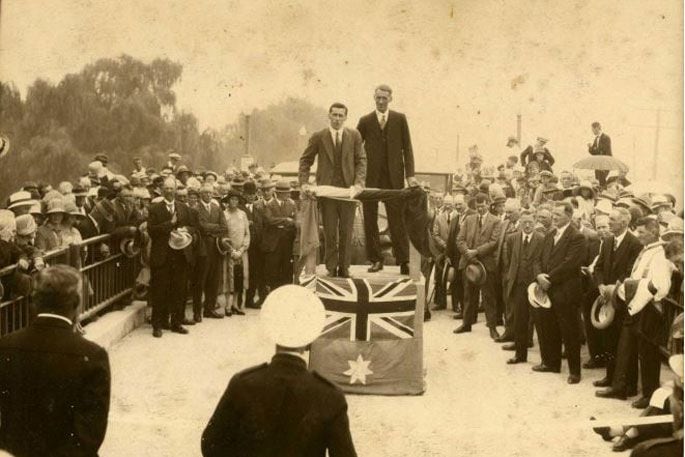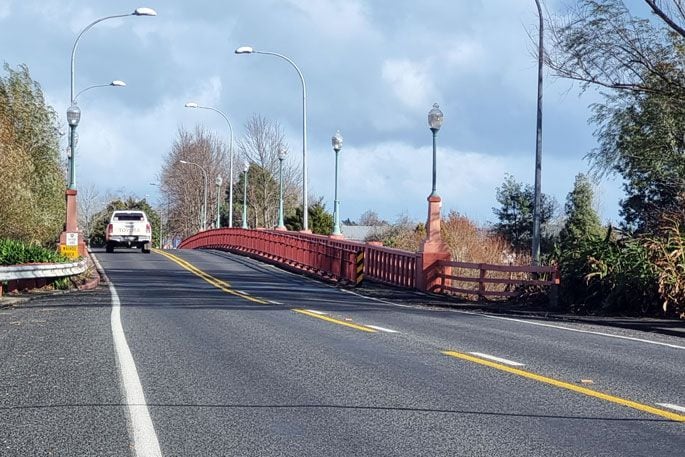It was a little over 95 years ago, on Wednesday, February 22, 1928, that the present bridge over the Waihou River at Te Aroha was officially opened.
Until then, it had simply been known as the new “Traffic Bridge” but it was Mr W. C. Lowry, chairman of the Piako County Council - a major contributor to the cost of the bridge - who suggested that the bridge henceforth be named “Coulter’s Bridge”, in honour of the then mayor of Te Aroha, Robert Coulter.
It was in 1919 that a proposal to replace the old timber bridge over the Waihou at Te Aroha was first made. This bridge had been constructed in 1910 and ran on the centreline of Kenrick St where the current bridge now sits. Its carriageway was only 13ft (4 metres) wide, there was no provision for foot traffic, only one line of traffic, and subject to high maintenance costs. In the words of the local paper, the advent of the motorcar had created “a public calamity”.
A government commission was established to decide whether to widen the existing timber bridge or to replace it with a new one. This commission met in 1925 and took submissions from the Te Aroha Borough Council, the Piako County Council, the Government Public Works Department (PWD) and other interested parties, including local residents and ratepayers. The Government of the time had agreed to pay a subsidy towards the cost of any new bridge as it was the opinion of PWD that the present bridge should be replaced.

Mr Robert Coulter, Mayor of the Te Aroha Borough Council, speaking at the opening of the new Traffic Bridge on February 22, 1928. Photo: Te Aroha Museum.
The commission recommended that a new bridge be constructed and that, “after allowing for the Government subsidy, the balance of the cost should be provided and paid by the Te Aroha Borough Council in the proportion of 70 per cent and by the Piako County Council in the proportion of 30 per cent”.
The borough council then appointed Auckland-based consulting engineers Jones and Adams to design the bridge.
The senior partner, Stanley Jones, was a notable exponent of early reinforced concrete design and construction in the Auckland province including the concrete bridge over the Waikato River at Horotiu, built in 1921.
On March 26, 1926, Jones reported “the bridge will be reconstructed of reinforced concrete 400ft long, composed of 10 spans each 40ft on concrete piers built over reinforced concrete piles. The width of the bridge over balustrading will be 30ft 6in and includes a double carriageway flanked by two cantilevered footways each 4ft 6in in the clear. The footways will be separated by light wrought-iron railings mounted on concrete kerbs 12in wide. The bridge will be built with a longitudinal camber to allow clearance for navigation over the deepest part of the river. The cost would be about £15,000.″
Tenders were called and the bid accepted was £15,793 and 19 shillings from Willcox and Co, Auckland, for construction of the new bridge including the erection of a temporary structure running parallel to the existing bridge to facilitate the construction.
Construction then ensued but was accompanied by a series of controversies which made the recent debate over bridge painting seem inconsequential.
Slander, construction errors, fist fights, and two subsequent court cases ensured that the local press of the time had much to report in relation to the work as it progressed.
It was at the celebration dinner following the official opening on February 22, 1928, that Stanley Jones said he was “quite satisfied that the bridge had been constructed to meet all requirements. I have heard it mentioned that it would last 100 years. Well, as far as engineers knew, there was no limit to the life of such a reinforced concrete bridge. No doubt, it will last many centuries.”



1 comment
Flag
Posted on 27-07-2024 14:28 | By PJ-Bethlehem
hmmmmm,
not sure about that flag..... the NZ flag {currently} does not have a large white star directly under the union jack.... however the Australian one does..?????
Leave a Comment
You must be logged in to make a comment.